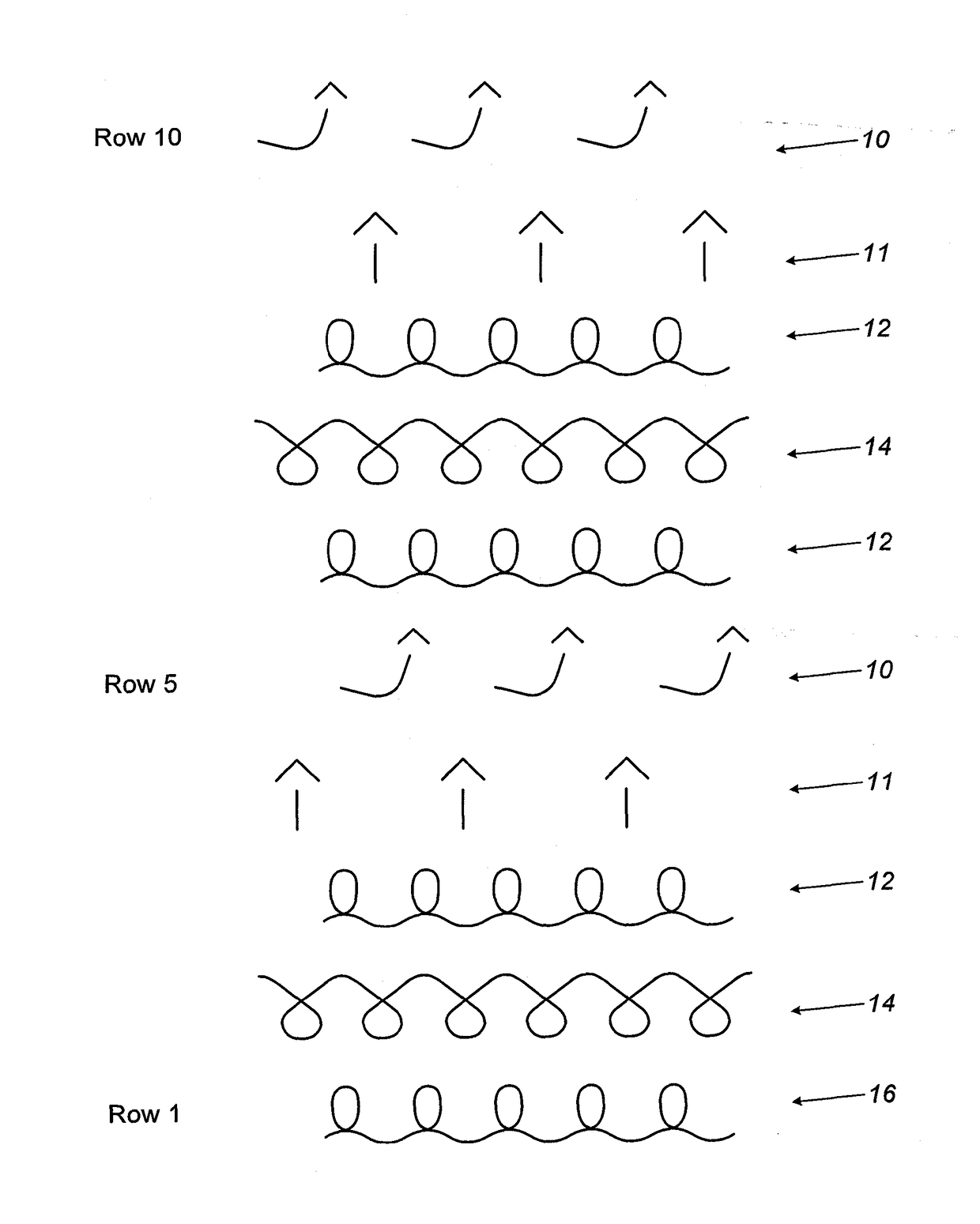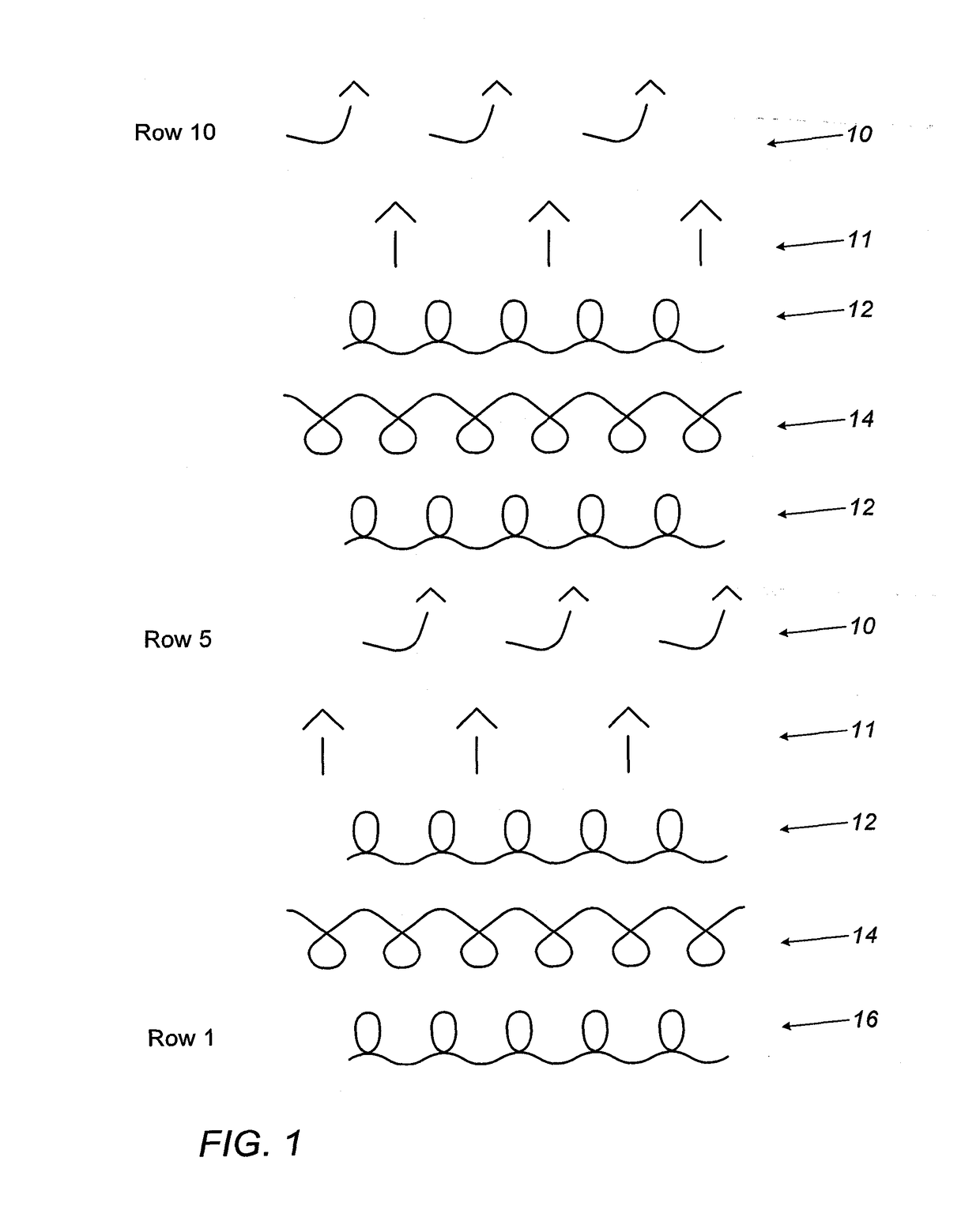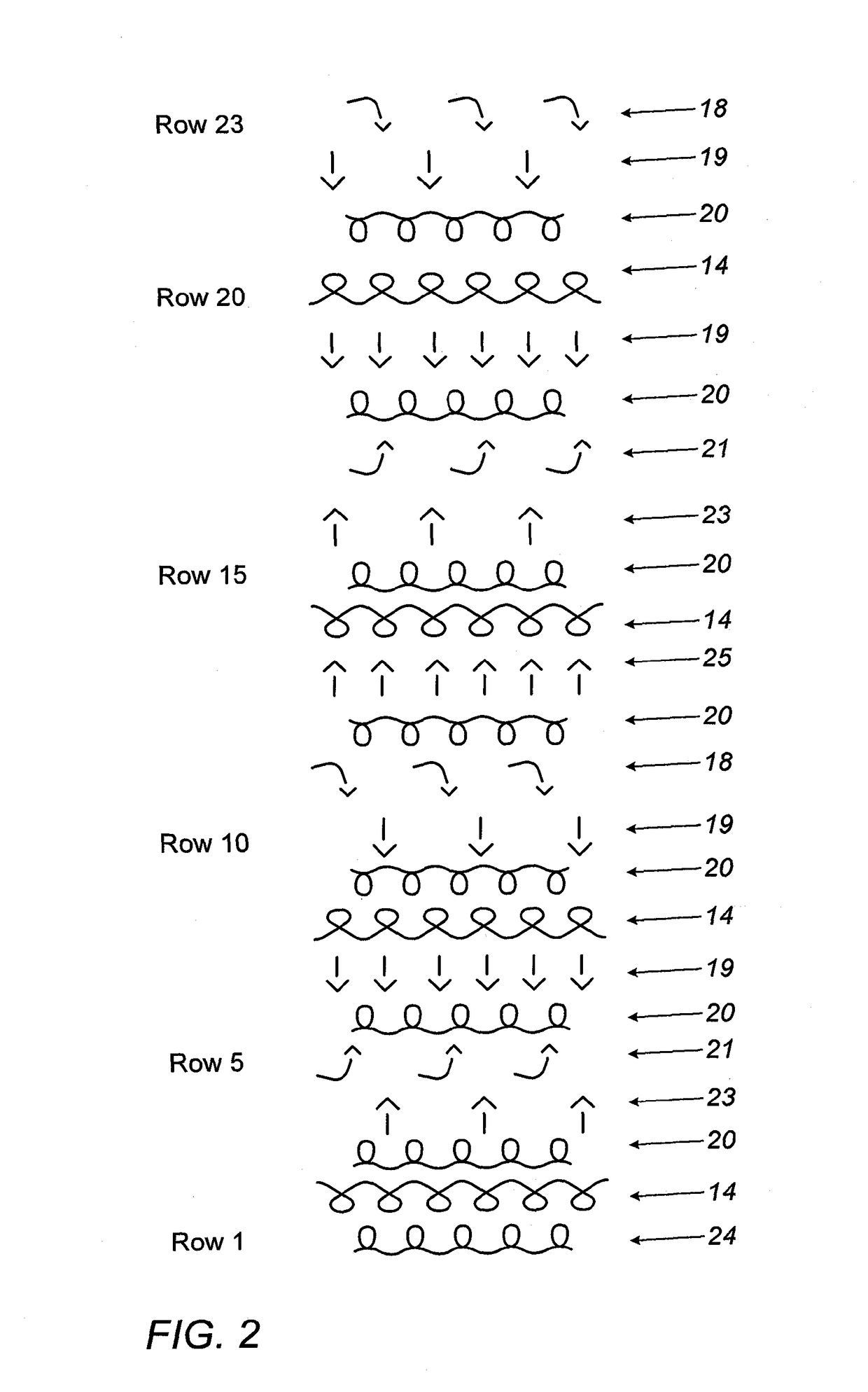A self-attaching fabric and methods of manufacturing same
a self-attaching fabric and fabric technology, applied in the field of fabric, can solve the problems of too coarse for medical and infant use and too thick joint area for high-fashion us
- Summary
- Abstract
- Description
- Claims
- Application Information
AI Technical Summary
Benefits of technology
Problems solved by technology
Method used
Image
Examples
first embodiment
[0037]There is seen in FIG. 1 a representation of a method for manufacturing the fabric, a thin fabric provided with hooks on one side only. The diagram refers only to STEP D, which in particular serves to reveal the structure of the resulting fabric.[0038]STEP A: Providing an industrial flat knitting machine having a front needle bed and a rear needle bed and being provided with electronic controls. An example of a suitable machine is manufactured by STOLL, Germany. Typically the machines are for 12 gauge but multi-gauge machines are available from the same manufacturer.[0039]STEP B: Loading the machine with yarns as needed to form the base fabric.[0040]STEP C: Loading the machine with the monofilament yarn to form loops.
[0041]The description refers to the fabric sequence being performed on the rear needle bed, while the loops are knitted on the front bed. This arrangement can be reversed if desired.[0042]STEP D knitting the fabric including forming of the loops on one surface of t...
second embodiment
[0045]Referring now to FIG. 2, there is seen a representation of STEP D in a second embodiment wherein the fabric is provided with hooks and loops on both sides. This of course results in a fabric somewhat thicker than that described with reference to FIG. 1.
[0046]Row 1 of the diagram refers to release of alternate loops 18 from the rear needle bed (not shown). In row 2 the loops 18 are transferred 19 to the front bed (not shown).
[0047]Row 3 represents knitting of the basic yarn 22, while row 4 represents knitting the monofilament
[0048]In row 5 there is a transfer of loops 18 to the front bed, followed by knitting a row of the basic yarn 22 in row 6. Row 7 shows release 21 of loops 18 from the front bed, and their collection 23 by the rear bed is seen in row 8.
[0049]In row 9 there is a further row of knitting of the basic yarn 22, followed by knitting of the monofilament 14 in row 10.
[0050]In row 11 loops 18 of the monofilament are transferred 25 to the rear bed. In row 12 again the...
PUM
| Property | Measurement | Unit |
|---|---|---|
| transparent | aaaaa | aaaaa |
| pressure | aaaaa | aaaaa |
| area | aaaaa | aaaaa |
Abstract
Description
Claims
Application Information
 Login to View More
Login to View More - R&D
- Intellectual Property
- Life Sciences
- Materials
- Tech Scout
- Unparalleled Data Quality
- Higher Quality Content
- 60% Fewer Hallucinations
Browse by: Latest US Patents, China's latest patents, Technical Efficacy Thesaurus, Application Domain, Technology Topic, Popular Technical Reports.
© 2025 PatSnap. All rights reserved.Legal|Privacy policy|Modern Slavery Act Transparency Statement|Sitemap|About US| Contact US: help@patsnap.com



